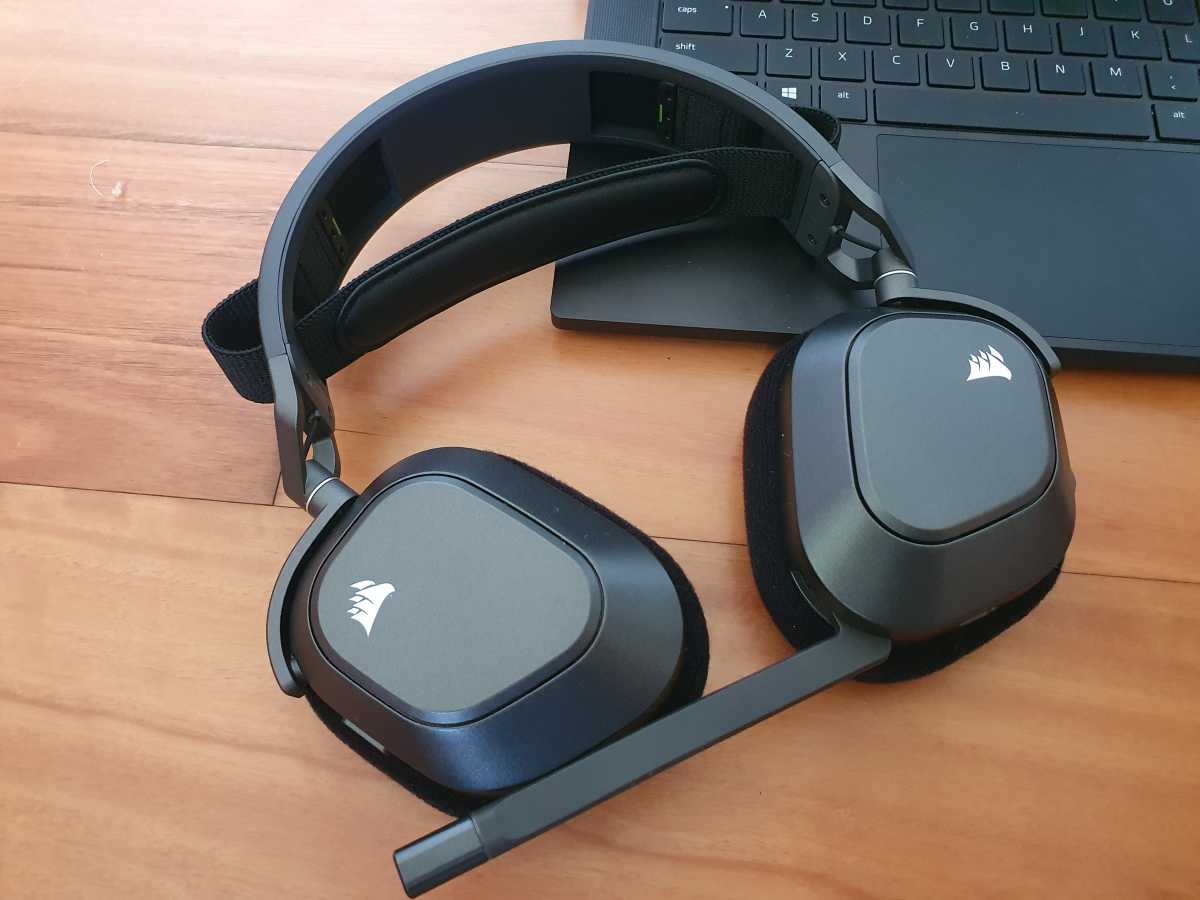
 Image: Dominic Bayley / IDG
Image: Dominic Bayley / IDG
Living in a super-hot climate most of the year has led me to choose a gaming headset with mesh earpads over the stuffy leatherette kind, if only just to stop my ears feeling like jacket potatoes.
But seriously, whoever decided to put mesh in cheap headsets instead of leatherette (with a few exceptions) did me a big favor. It’s so much cooler, but it also means if I buy friends and family members gaming headsets during the Black Friday sales I can dodge paying top dollar.
I’ve found that a lot of high-end headsets try to pack in way too many smart technologies that can put a dampener on the audio fidelity…
Discovering that nugget of information has led me to double-think everything else I really need in my headset — from the sound, comfort, and even the connectivity for the price being offered. I mean, why would I need to go out and spend $300 on a headset and get a whole bunch of features that I’d actually prefer weren’t there, if I can get something better for less.
I’ll unpack some examples below.
Firstly, it’s a myth that you won’t find what’s traditionally considered more premium materials in cheaper models (when I mean cheaper, I’m talking around the $150 mark instead of that premium $200 to $300 mark). Headsets like the Corsair HS80 Max, SteelSeries Arctis Nova 7X, and Logitech G Pro X all cost between $150 to $200, yet they sport metal headbands, which go a long way to prevent breakage.
That they have plastic earcups instead of full metal ones (another feature associated with cheaper sets) has also won my vote. Personally, I really dig how lightweight they are. I know I can wear them a lot longer than metal cans without feeling any uncomfortable pressure on my head.
The cohort I mentioned above don’t skimp on comfort either. They dish it out with deep memory foam cushioning. They also move how the pro models do, with sliding headbands and rotating cups that fit your ears and relieve pressure on your head.
mentioned in this article
Logitech G Pro X

 Read our reviewBest Prices Today:$99.99 at Amazon | $99.99 at Logitech G | $99.99 at Logitech Gaming
Read our reviewBest Prices Today:$99.99 at Amazon | $99.99 at Logitech G | $99.99 at Logitech Gaming
For connectivity, most of these headsets do just as well as premium headsets too; they usually sport either 2.4GHz Wi-Fi and/or Bluetooth or wired connectivity, or in the best cases a combination of both.
Great cross-platform connectivity is also now fairly standard, something you’d previously have to spend an arm and a leg for. In fact, I counted at least three recommendations in PCWorld’s Best Gaming Headset roundup that fit the price range I’m talking about and connect to up to five separate platforms.

Headsets like the Corsair HS80 Max punch well above their weight in terms of price.
Headsets like the Corsair HS80 Max punch well above their weight in terms of price.
Dominic Bayley / IDG
Headsets like the Corsair HS80 Max punch well above their weight in terms of price.
Dominic Bayley / IDG
Dominic Bayley / IDG
Nailing all the gamer-specific functionality that I want is a little harder to do, but there are some examples out there that come close. One is the $99 Turtle Beach Stealth 600 Gen 3, which has, among other things, a flip-to-mute microphone, remappable chat/mixer wheel and mode button — all things you’d expect to find in a headset priced more than $200.
mentioned in this article
Turtle Beach Stealth 600 Gen 3
 Read our reviewBest Prices Today:$99 at Amazon
Read our reviewBest Prices Today:$99 at Amazon
Not impressed with all that? How about just plain excellent audio then?
All premium headsets cite this as something they can do better than the cheaper models, but in my experience, that’s not always the case. I’ve found that a lot of high-end headsets try to pack in way too many smart technologies that can put a dampener on the audio fidelity. Noise-cancelling algorithms or adaptive sound… these things can sometimes just get in the way.
But a lot of cheaper headsets just have such warmth and clarity and are well-tuned for games. I can vouch for the audio fidelity in the group I mentioned before, because I’ve tried them all.
So next time you’re in the market for a headset try something more mid-range than premium. I’ve got a feeling you’ll be pleased with your choice.
Author: Dominic Bayley, PCWorld Australia Editor
Based in Australia, Dominic Bayley is a hardcore tech enthusiast. His PCWorld focus is on PC gaming hardware: laptops, mice, headsets and keyboards.
Recent stories by Dominic Bayley:
Why 3D spatial audio is an unheralded game changerLogitech G Pro X 2 Lightspeed review: The reason I’m now on team grapheneTurtle Beach Stealth 600 Gen 3 review: My new go-to gaming headset


